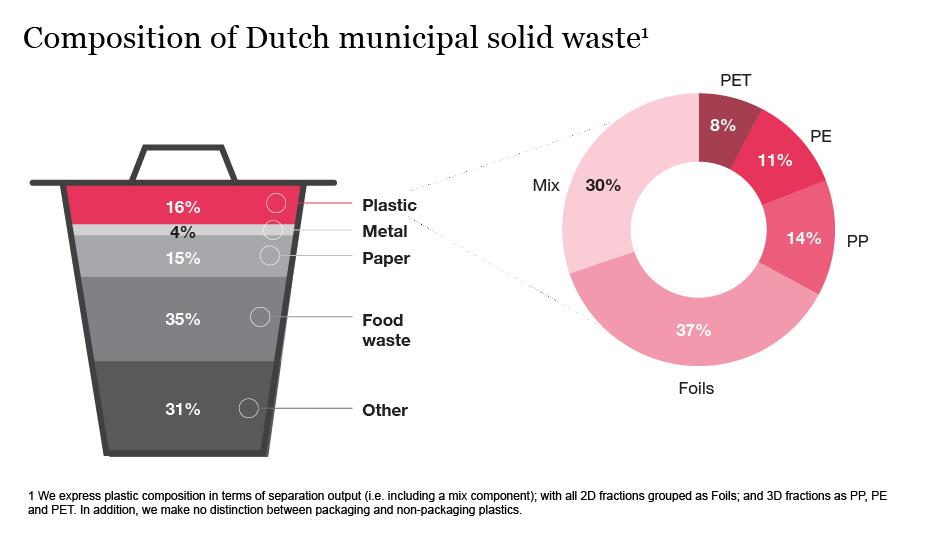{{item.title}}
{{item.text}}

{{item.title}}
{{item.text}}
The Dutch government has set the ambitious goal of having a circular economy in the Netherlands by 2050. Given the high cost and environmental impact of recycling plastics, the focus should be on reducing the overall consumption of (virgin) plastics. In parallel, the plastic recycling pathways have multiple levers for reducing costs and improving overall recycling rates.
Our Plastic Pathways report identifies how stakeholders can influence these levers to bring down costs, increase efficiency, and reduce environmental impact.
Minimising the use of virgin plastics and maximising the recycling rate of used plastics is a key focus area in current waste policy. The Netherlands has developed policies and incentives to increase the recycling rate of plastic waste to meet (and even exceed) European targets. There are different pathways for recycling plastic waste, some of which have been analysed in the past. However, a comprehensive study that compares all the main pathways for plastic waste from collection to recycled plastic feedstock has not been undertaken so far. Until now.
Household plastic waste makes up around 16 percent of municipal solid waste in the Netherlands and splits out into different plastic types, such as PET, PE, PP.
The following five main plastic waste pathways are analysed in this study:
This study compares these pathways in terms of recycling performance, economic costs, and carbon emissions. The objective of our study is to provide a like-for-like comparison, without drawing conclusions on the “best” pathway. We identify the levers that stakeholders can influence to bring down costs, increase efficiency and reduce environmental impact. Our model is tailored to the Dutch situation but is fully flexible, allowing all parameters to be adjusted to country-specific situations, to test policy initiatives, or to assess the impact of efficiency improvements.
“Over time we expect that post-separation performance will improve, because of technological progress and cost reductions, which will shift the balance more in favour of this pathway versus source-separation.”
Our analysis shows that:
The choice depends on specific circumstances, like urban complexity, costs and technological developments, and policy preferences by stakeholders.
Rutger Bots and Jim Baarslag also contributed to this report.

